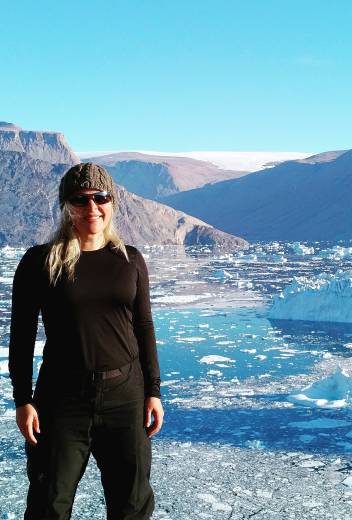
We’re often asked, are the Svalbard archipelago and its largest island, Spitsbergen, a part of Norway? Yes and no! There’s certainly a great deal of Norwegian influence, thanks to the proximity of these islands to the mountainous Scandinavian country. But, you might be surprised to learn that Svalbard’s culture and industry has deep Soviet roots, as well.
Is Svalbard a Part of Norway?
You’ll know that Svalbard and its largest and only populated island, Spitsbergen, are special places from the time you board a plane bound for Longyearbyen at the Oslo airport. On non-stop flights, you’ll leave from the international terminal, as Svalbard is considered outside of the Schengen area. That’s right—Oslo to Longyearbyen is not a Norwegian domestic flight!
From an administrative standpoint, the islands of Svalbard are not a part of Norway. The archipelago forms an unincorporated area administered by a governor, who is appointed by the Norwegian government. This special position is regulated by the Svalbard (or Spitsbergen) treaty, which recognizes the sovereignty of Norway over the islands with the caveat that signatories are given equal rights to engage in activities in Svalbard.
Visiting Svalbard a Norwegian & Soviet Cultural Experience

A sled dog races ahead of the pack to catch up with Quark Expeditions travelers near Barentsburg in the Svalbard archipelago. Photo: Hans Lagerweij
Many countries have used those rights only in limited ways, typically to establish scientific research bases (especially in Ny Alesund), but both Norway and Russia are more involved on the ground. Each of these two countries exercises its treaty rights to engage in commercial activities, notably in coal mining and tourism.
Fun fact: North Korea was the last country to sign the treaty and did so in 2016! They have not appeared in Svalbard yet, though.
The Russian mining company Artikugol owns four areas in Svalbard, which together account for 0.4% of all land on the islands. Most of the company’s activities take place in the small settlement of Barentsburg, home to fewer than 500 Russians and Ukrainians.
Explore Spitsbergen: The Wildlife Capital of the Arctic from Quark Expeditions
What is There to See & Do in Barentsburg, Svalbard?
In 1932, the Russians bought the local coal mine from the Dutch, whose heritage is reflected in the name. Still operational today, the mine was named after famous Dutch polar explorer Willem Barentsz, who died at sea near the Russian Arctic islands of Novaya Zemlya (between the Kara and Barents seas, the latter also named after the explorer). Artifacts from his Arctic expeditions are kept in the tiny but interesting museum at Barentsburg.
You might have the opportunity to visit Barentsburg on an expedition with Quark, and find it a welcome cultural break after being absorbed in the fantastic wildlife of the Svalbard archipelago. The settlement still breathes the old Soviet times, with heroic monuments and murals, communist slogans and, of course, a statue of Lenin.

Travelers explore the community of Barentsburg while on expedition in Svalbard with Quark.
Photo: Hans Lagerweij
A local dance group sometimes performs to traditional Russian and Ukrainian songs. You might visit the mine (open for visitors on the weekend, or early mornings on work days) and the sled dogs. Incredibly cute, Barentsburg’s sled dogs are extremely active and need special exercise in the summer to get ready to pull sleds in the winter. You might even get to take the dogs out on a special harness, so you aren’t pulled over!
See for yourself what it’s truly like to spend time in Spitsbergen:
A second Russian settlement is called Pyramiden. The town was abandoned shortly after the local mine closed in 1998, leaving an eerie and historically significant ghost town for you to explore.

Haunting Pyramiden is home to monuments to Soviet heroes and political figures for you to see and explore on your Svalbard expedition. Photo: Hans Lagerweij
All that remains as far as human inhabitation is a single hotel and its live-in staff. Pyramiden was first settled by Sweden, then sold to the Russians in 1927. Here, you’ll see monuments to Soviet heroes and political figures, including the most northern Lenin monument on the planet. Visit the empty canteen, or the cinema at the cultural center. One of the highlights of any visit to Pyramiden is just slightly out of the town’, where you’ll find the “bottle house,” a recreational building made from empty white and green glass bottles.
Visiting the Svalbard towns of Barentsburg and Pyramiden is a unique experience—a step back in Soviet times as they might have been in the 1970s, but located in one of the world’s most fascinating polar landscapes.
Want to learn more about planning your visit to Svalbard?
- Read this Must-Know Arctic Expedition Info: Currency, Language & More
- Explore the brand new 6-day Spitsbergen Highlights and 13-day Spitsbergen Photography expeditions
- Enjoy the Spitsbergen & Svalbard Destination Guide online










